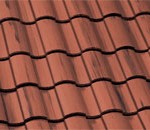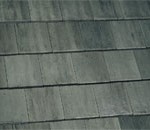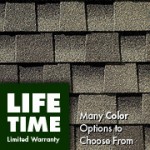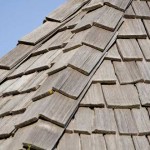4 Common Types of Roofs
Roof Types Used in the Bay Area
The expression “having a roof over one’s head” signals security and stability.
But even the best roofs need to be maintained, repaired, and sometimes replaced. Your choice of roofing material for your San Francisco home or Bay Area business can profoundly influence not only your roof maintenance repair costs for years to come but also the likelihood (or not) that your Bay Area home will stand up to gusting winds, heavy downpours, and pestilential invaders of all sizes.
Here are 4 common types of roofs:
1. Clay or Terracotta Look

Clay and Terracotta roofs are ideal for Spanish, Mediterranean, Southwestern, and modern homes. Clay is resistant to burning and rotting, and insects have a devilish time doing anything to clay. Clay is also available in myriad colors and styles, and the tiles require practically zero maintenance. The downsides include the price (high quality clay is not cheap!) as well as the fragility of the tiles. A falling branch can shatter tiles. Plus, tiles also weigh more than other materials, so you may need to add support for them.
2. Slate
Do you want your home to resemble a grand old building of the Ivy League? If so, slate rooning might be an appropriate choice. Slate is also relatively expensive, but it looks natural, and you can use diverse patterns. Like clay tiles, slate tiles protect well against fires, they’re easy to maintain, and they’re highly resistant to pests and rotting. Like clay, however, slate can weigh a lot; and, when you do need maintenance, cleaning the tiles can be complicated.
3. Composition Shingles
These more affordable roofs are versatile and simple to install. Composition roofing come in a plethora of colors and style types. If “going green” is important to you, you can get recycled shingles. You can also “upgrade” to shingles made of fiberglass or asphalt. Composition shingles also offer pretty stellar fire protection (at least for most brands) and have a low maintenance burden. On the downside, the materials don’t exactly have a fabulous aesthetic, and they can get blown off or damaged during winds and storms.
4. Wood Shakes
Like composition shingles, wood shake roofing offer a dazzling diversity of colors, styles, and patterns. They also can help you with insulation and circulation. Wood shakes are obviously more fire vulnerable than clay or slate tiles. Impregnating shingles with fire retardant is generally better than simply spraying chemicals on. The installation process can be quite complicated; and wood is vulnerable to insects, fungal rot, mold, etc. When you choose a higher quality wood (e.g. one made from cedar tree hardwood), you can protect yourself against some of these issues (e.g. easy rotting). Different shake mills produce different quality products, so you need to be vigilant when you shop.
For help choosing the right roof for your needs, get in touch with the experts here at Century Roof & Solar. We can provide objective, customized and sensible advice about how to repair/maintain and install your roofing selection. Call us today for a free consultation.



